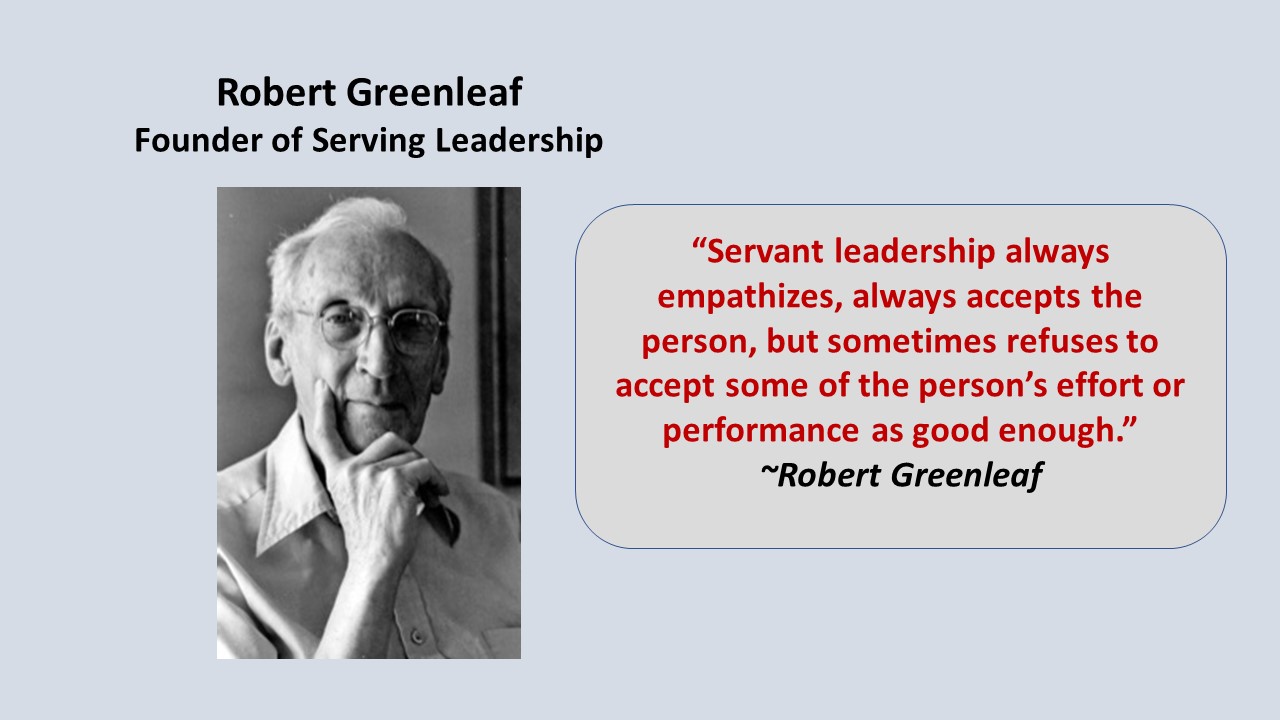By Thomas Davis, CRNA, MAE, DNAP candidate
follow @procrnatom on twitter for leadership moments
“Where there is not community; trust, respect, and ethical behavior are difficult for the young to learn and for the old to maintain.”
― Robert K. Greenleaf,
Health care delivery in the United States and around the world is in a state of transition as traditional physician-driven hierarchies are being replaced with collaborative teamwork. At the root of this drive is a hope for improving employee engagement, productivity and loyalty to the organization. More than at any point in history, empowering leadership at all levels is being viewed as the key to building powerful teams and the serving leadership style is being promoted as the panacea for workplace woes.
Robert Greenleaf was born in Terre Haute, IN, in 1904, the son of a machinist and community steward. Robert attended Rose Polytechtic and Carlton College earning a degree in engineering. He took a position with AT&T where he worked as a loyal employee for 38 years and became known for his theories about empowering leadership. During that time, Robert headed a division for management training and created the first center for corporate assessment in America. One of the first to promote women and blacks into non-menial positions within the AT&T organization, Greenleaf became well known as a pioneer in leadership by seeking ways to utilize each person to his/her fullest capability.
Following retirement from AT&T at age 60, Robert worked as a consultant to businesses that had an interest in leadership development and taught them to implement his core belief that effective leadership is a partnership wherein “the organization exists as much for the person as the person exists for the organization.” In 1970, Greenleaf published his essay, The Servant Leader which coined the term and introduced the notion that the best leaders are servants first. The style of leadership that he espoused proved to be effective and requests for his leadership coaching grew into creation of the Greenleaf Center for Servant Leadership. The center states as its mission: “to advance the awareness, understanding and practice of servant leadership by individuals and organizations.” Long after the death of Robert Greenleaf, the center remains a strong advocate for servant leadership and continues to offer training through the Greenleaf academy.
Writing in EmergingRNLeader, nurse and author Rose Sherman identifies the leadership style described in The Servant Leader as an essential component of a highly effective healthcare workplace. Crediting the work of Robert Greenleaf, the following were described by Sherman as essential characteristics of the Greenleaf serving leadership style.
- Listening
- Empathy
- Healing
- Awareness
- Persuasion
- Conceptualization
- Foresight
- Stewardship
- Commitment to professional development of staff
- Building community
Click here for an explanation of the 10 principles listed above.
Robert Greenleaf had an unshakable belief that through collaboration and the creation of a work environment that empowers people to work at their highest capability, people will be happy, engaged and highly productive. History records that Robert was never driven by a quest for fame or fortune, but by a belief that the potential within each person that could be released, can be released, through servant leadership. Etched in his grave stone are the following words, “Potentially a good plumber; Ruined by sophisticated education.”
In the decades following the publication of his famous essay, Robert’s principles of servant leadership have become the foundation for many versions of leadership development in America and worldwide. Books, videos, and workshops may put a new spin on Greenleaf’s original work; however, when all is said and done, the beliefs of Robert Greenleaf are still alive and evident in leadership development worldwide.
“A better society, one that is more just and more loving, one that provides greater creative opportunity for its people.”
~Robert Greenleaf
Tom is a noted author and popular speaker at State Association meetings
